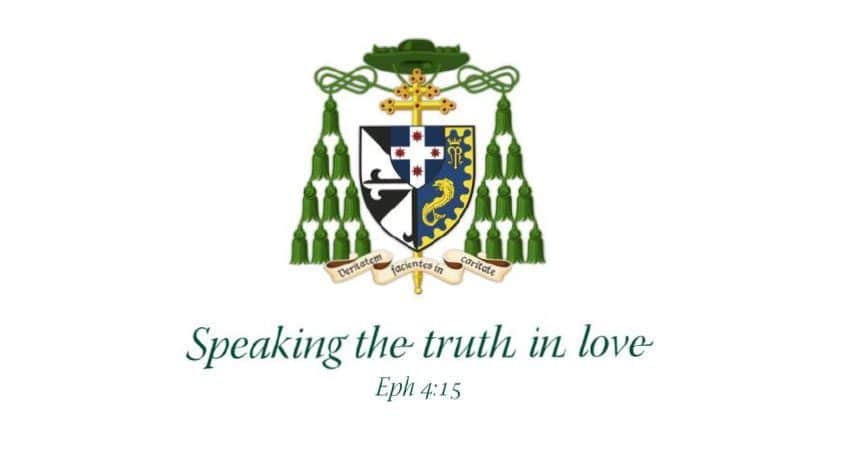HOMILY FOR THE FEAST OF THE PRESENTATION OF THE LORD (CANDLEMAS) NATIONAL JUBILEE FOR CONSECRATED LIFE

ST MARY’S CATHEDRAL, SYDNEY, 2 FEBRUARY 2025
A few days ago, the Church celebrated the memorial of St Thomas Aquinas, the great 13th-century Dominican friar who was arguably the greatest ever theologian, and the first person designated a Doctor of the Church since the patristic period. He was famed for the persuasive way he united faith and reason, and explored everything from the biggest God questions to the smallest human ones, along the way teaching us about reasons to think God exists, what God is like, the Eucharist and the other sacraments, the nature of angels and human beings, the principles and character traits of a good person and a good Christian, and so much more.
In his tract on hope in the great Summa Theologiae, Aquinas wrote that “Because what we hope for is in the future, is difficult, but is possible, youth is a cause of hope.”[1] Sounds strange. But Thomas went on to explain himself. “First, young people have much of the future before them and little of the past behind them: where older people have memories, younger people have hopes. Secondly, on account of their warm nature, youths are generally high-spirited; their expansive hearts embolden them to attempt difficult things; they are mettlesome and self-confident. Thirdly, having not been repeatedly thwarted in their plans and being unaware of their own limitations, young people easily dare what might seem impossible to older ones: they think that where there’s a will there’s a way.” In these last two respects—high spirits and recklessness—Thomas likened young people to drunks!
: Our Gospel this morning (Lk 2:22-40) might seem to back Thomas up. God enters His Temple in the form of a human Baby, and instead of whoopies we hear old Father Simeon’s portentous prophecies: that the Babe is destined for the rise and fall of many, to be contradicted unto death, and so be a sword for His own mother’s heart. In the meantime Simeon proposes to crawl into a corner and die…
Simeon’s theme of light is why candles were traditionally blessed before this Mass, carried in procession and taken home afterwards as a defence against storm and calamity. Thus, the Feast was known as Candle-Mass in old English, Candelora in Italy, Lichtmëssdag in German-speaking places, and Nuestra Señora de la Candelaria in Latin America and the Philippines. (In the United States it’s called Groundhog Day—go figure!) What enlightened Simeon realised was that no matter how many birthday candles you have on your cake, you don’t have to be grave and gloomy. He could jump about and sing for joy like any kid. And he wasn’t altogether an outlier: in the previous chapter of Luke’s Gospel we heard how old Zechariah and his wife Elizabeth conceived in their old age and took to singing the Hail Mary and the Benedictus. This babe could stir the oldest hearts to new life!
Yet you’d be wrong to think he was one of Aquinas’ hardened old cynics: quite the opposite. In Simeon, the ancient world receives the splendour of God’s eternal youth. A forty-day-old Babe gurgles in his arms and he cannot resist giggling too. He’s inspired, not by the demon drink but a much holier Spirit to sing his lullaby, the Nunc Dimitis. “You can let me go now, God. Mine eyes have seen the glory of the coming of the Lord. I’ve seen the light. Salvation has dawned. Spring has sprung after our long dark winter. Instead of me singing the Babe to sleep, He will now sing me to eternal rest!”
The other golden oldie in our Gospel today is Anna. She’s 84 years old, according to some translations, or 84 years a widow and so well over 100 years of age in others. Like Simeon, she haunted the church and, like him, she got to see something that made her want to ring the church bells. So, it’s the old folks in today’s Gospel who demonstrate those youthful qualities of hope even when things are difficult. It is the more mature characters who demonstrate that they live in the future rather than the past, full of confidence, warm-natured, big-hearted and high-spirited.
How is it that Simeon and Anna managed to maintain their youthful openness and inebriating joy? St Thomas thought getting older can make you cynical: too often your dreams have been dashed so you end up not expecting much. Yet he knew very well that there’s a better way to deal with thwarted plans, and that was the way Aquinas himself lived and great saints like Simeon and Anna before him: he handed over all his hopes and plans, uncertainties and even failures to God. If it was God thwarting his plans that could only be because God had greater plans. But if it was man thwarting his plans, he need not fear: he would see the salvation, light and glory of his Saviour, if only he trusted in God.
Trust in God is of course at the heart of consecrated life. It is what animates those able to embrace poverty, chastity and obedience and to proclaim Christ with the witness of their whole life. Like the prophets in our Gospel, their steadfastness in the Lord propels them to live out the hope of God’s salvation, to place themselves each day, through word and deed, in God’s presence.
The contribution consecrated men and women have made to the Church in Australia and here in Sydney cannot be overstated. Faithful and courageous religious bishops, priests, sisters, and brothers of generations past laid the spiritual and physical foundations of so much that we still rely upon today: schools, hospitals, aged care and more. They assisted in building our parishes and organising our pastoral programmes, and in extending the charity of God to others through social welfare of many kinds. And so, for the wonderful gift of all our consecrated religious, for their tireless work in building up God’s Church and proclaiming the Gospel, for their commitment to bringing the love of Christ to all people, we say, thanks be to God for all of you! Whatever your age, you are a cause for hope! And that we might be graced with many more fruitful religious vocations in the years to come, we offer this Mass in intercession.
God bless you, dear brother and sister religious!
[1] St Thomas Aquinas, Summa Theologiae, Ia-IIae, q. 40, a.6.

